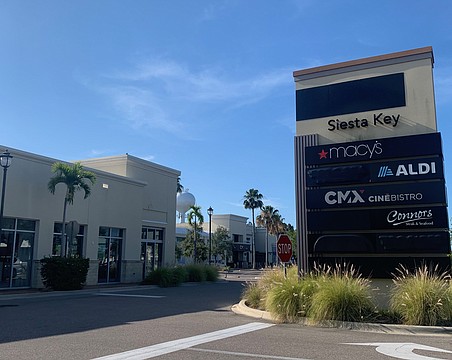Job Jitters
Trends by Sean Roth | Real Estate Editor
Steve Gunderson doesn't see a pretty future coming for the American workforce. Over the next 50 years, his research shows a looming shortage of skilled labor that could pose a serious challenge to the future of the U.S. labor force. Workers are going to need to be much more adaptive as technology continues to drive the job market.
The message for small business owners, hiring managers and chief executives: Unless you help your workers keep up with a skills learning curve now, you may not be able to find workers when you need them later, at least not in the United States.
Gunderson calls the coming workforce crisis the Jobs Revolution. He co-authored a book with the same name. Gunderson, a former U.S. congressman who is now president and CEO of the Council on Foundations, explained the revolution in Sarasota at a luncheon hosted by The Economic Development Corporation of Sarasota County April 28.
The future worker shortages, Gunderson says, will come principally from the baby-boomer population retirement wave coupled with somewhat stagnate population growth nationwide. At the same time, Gunderson says there is a growing skill gap fueled by the steadily declining number of jobs available to employees with no higher education.
Simultaneously, he argues, the explosive growth of minority groups in the population, principally Hispanics and African Americans, brings increasing educational deficiencies and inequalities that need to be addressed. For example, Gunderson reports that population trends forecast that Hispanics will make up 37% of the workforce-age population by 2010, yet other statistics show that presently only 11% of Hispanics over 25 have a bachelor's degree.
Gunderson says economic data shows the U.S. economy is ultimately benefiting considerably from the current usage of hiring employees overseas, primarily because U.S. companies can then reinvest those higher profits back into the community. The problem with that, Gunderson acknowledges, is that there are few systems available to help displaced U.S. workers catch up to fill a skilled-worker job.
China and India also have a big population advantage over the United States. Gunderson says that if natural intelligence is spread evenly across populations, then those two countries likely have four or five "good minds" to every one of their U.S. counterparts.
All of those problems leave education and constant skills training as the only panacea to keep the U.S. workforce on the top rung of the labor market. His argument is that encouraging higher education is ultimately a workforce investment.
"It used to be we would put all of our money into tax incentives to bring corporations to our area," Gunderson says, speaking before his presentation. "The reality today is that we need to put all of our public resources into education and training, because if we have the skilled workforce, the economic development will happen."
Gunderson also suggests employment insurance as a way that workers can constantly train themselves for the next job cycle change. In his example of the program, Gunderson suggests that a worker could save a dime for every working hour in an education account. Invested at even a paltry interest rate of 2%, in 20 years that worker would have $5,000 saved up, he asserts.
"Let's assume if the typical business says we'll match your dime with a dime, we would easily have $10,000," Gunderson says. "So that person could update his skills to remain a competitive member of the workforce. That's without government spending one more dime."
Gunderson says he was driven to write the book because too few Americans understand the specifics of the coming job crisis, which he argues, has allowed government officials to avoid addressing the issue.





